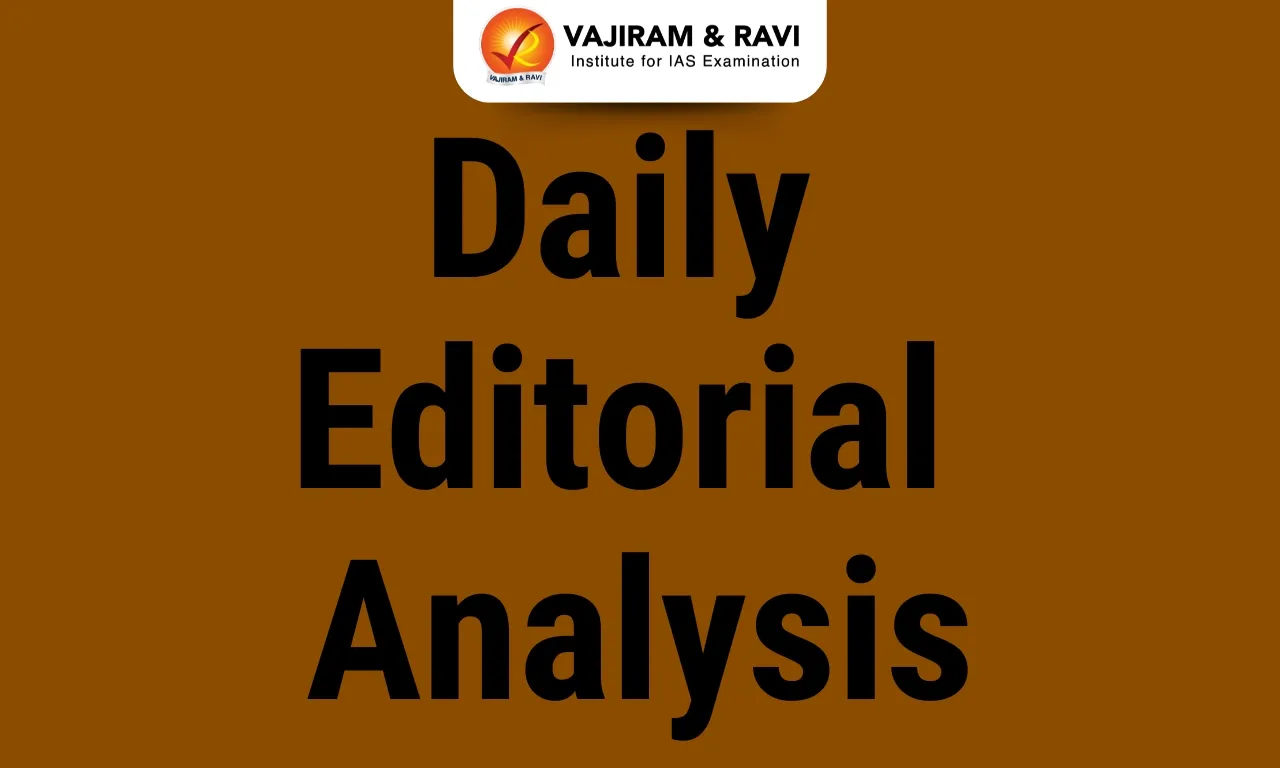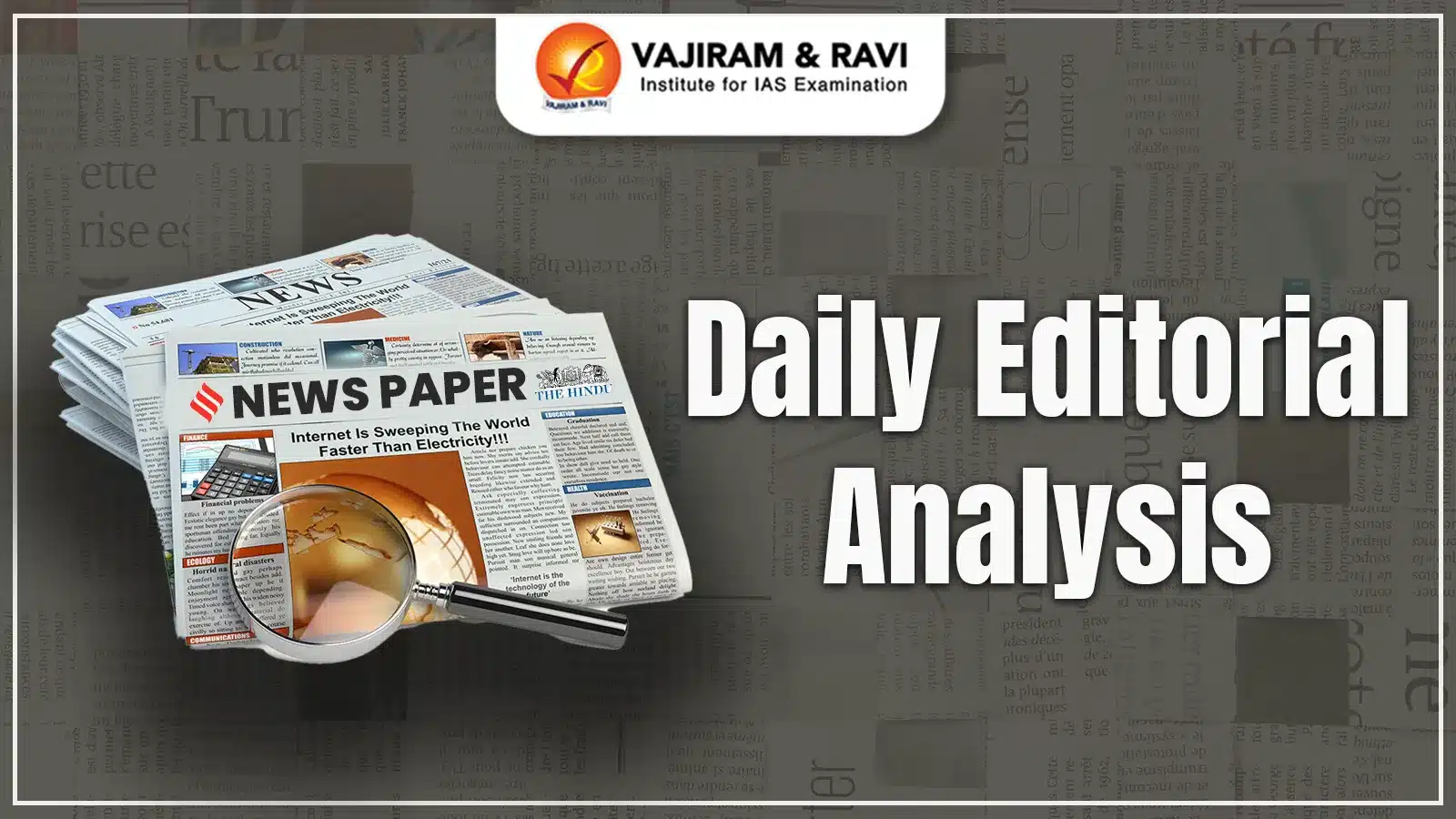Empowering Women in Agriculture for Food Security
Context
- In a landmark resolution supported by over 100 countries, the United Nations General Assembly has declared 2026 as the International Year of the Woman Farmer, placing global focus on the indispensable role of women in agriculture.
- While this recognition is a step forward, it also draws attention to the deeply entrenched challenges women face in the agricultural sector.
- Therefore, it is important to explore those challenges and the innovative responses being developed, particularly in India, through the lens of recent collaborative projects and policy initiatives.
The Centrality of Women in Agriculture
- Women are the backbone of food production globally.
- They contribute to 60% to 80% of food production in developing countries and constitute 39% of the agricultural workforce in South Asia.
- In India, a staggering 80% of economically active women are employed in agriculture. Yet, their contributions remain under-recognised and under-rewarded.
- One stark indicator of this disparity is land ownership. Despite their large presence in agricultural work, only 14% of landowners in India are women, and the National Family Health Survey reports an even lower rate of 8.3%.
- This lack of land ownership not only restricts their access to institutional credit but also hampers investments in modern tools and technology, limiting their productivity and economic independence.
Institutional Support and Policy Initiatives
- Recognising these barriers, the Government of India has initiated several programs aimed at supporting women in agriculture.
- The Mahila Kisan Sashaktikaran Pariyojana focuses on skill development and enhancing access to resources, while the Sub-Mission on Agricultural Mechanisation provides significant subsidies on farm machinery.
- Additionally, 30% of the National Food Security Mission’s budget is earmarked for women farmers across various States and Union Territories.
- These initiatives aim to narrow the gender gap in agriculture by promoting sustainable farming practices and facilitating women’s access to credit, inputs, and technologies.
- However, the impact of such programs depends on their reach, quality of implementation, and the creation of enabling ecosystems.
Climate Change and the Gendered Vulnerability
- Climate change is compounding existing gender disparities.
- Women, already burdened with domestic responsibilities, face heightened risks due to erratic weather patterns and agricultural uncertainties.
- Projects like ENACT (Enhancing Climate Adaptation of Vulnerable Communities), implemented by the World Food Programme (WFP) and supported by the Government of Assam and the Norwegian government, are addressing these concerns.
- In the flood-prone regions of Assam, ENACT introduces climate-resilient crop varieties and promotes livelihood diversification.
- By equipping over 300 women farmers with weekly advisories on weather and agriculture through mobile phones, the project exemplifies the use of technology and information dissemination to strengthen resilience.
- The Climate Adaptation Information Centres further this mission by enabling video conferencing and community meetings for knowledge exchange.
The Way Forward
- Partnerships and Scalable Solutions
- ENACT demonstrates the power of multi-stakeholder collaboration.
- By engaging state departments, meteorological institutions, agricultural universities, and rural livelihood missions, it creates an integrated approach to address the vulnerabilities of women farmers.
- This project also promotes smart seed production systems, market linkages, and the cultivation of nutrient-rich local varieties, enhancing both food security and sustainability.
- Such interventions show that when women are empowered with knowledge, tools, and networks, they can lead climate adaptation at the grassroots level.
- Need for Gender Equality in Agriculture
- While initiatives like ENACT are promising, much more is needed to realise gender equity in agriculture.
- Policy frameworks must be gender-sensitive, informed by granular, sex-disaggregated data, and responsive to the diverse needs of women. This includes:
- Designing tools and technologies suited to women’s use and scale of operation
- Expanding access to credit, savings, and insurance mechanisms
- Supporting women-led agri-value chains and self-help groups
- Building collective agency and leadership among women farmers
Conclusion
- The declaration of 2026 as the International Year of the Woman Farmer presents a historic opportunity to mainstream gender equality in agriculture.
- Women farmers are not just food producers; they are agents of change, resilience, and sustainability.
- By recognising their contributions and addressing systemic inequalities, we can promote a more inclusive, secure, and prosperous future for all.
The Census and the Remaking of a People
Context
- The transition from a population to a people is not merely a demographic process, but a deeply political transformation.
- In India, this transformation is mediated by tools such as the decadal census, which, while appearing to be a technical exercise in enumeration, in reality plays a profound role in shaping political identities, resource allocation, and representational structures.
- The upcoming 2027 Census promises to be a watershed moment in this regard, comparable in its long-term consequences to the COVID-19 pandemic that delayed the 2021 census, as it is poised to redraw the contours of Indian democracy through delimitation, caste enumeration, and political redistribution.
The Census: More Than a Count
- A census is conventionally understood as a comprehensive enumeration of the population, accounting for various demographic markers, including urban/rural residence, caste and tribe status, literacy, fertility, economic activity, and migration.
- However, the census does more than passively record reality; it actively shapes it.
- By categorising individuals into fixed groups, the census institutionalises identities and priorities, and in doing so, it helps constitute the political community, the people.
- Thus, the census is not a neutral exercise. As population trends shift, so too does the political landscape.
- For instance, increasing Hindi speakers in metropolitan cities or migration flows to southern India indicate changing demographic dynamics with potent political implications.
Political Demography and Parliamentary Representation
- At the heart of the 2027 Census lies the question of parliamentary representation.
- Article 81 of the Constitution mandates that parliamentary seats be redistributed after the first census following 2026.
- Due to the delay of the 2021 census, this redistribution, or delimitation, could take place earlier than expected, potentially in time for the 2029 general elections.
- With all data being captured digitally, the pace of this exercise is likely to be unprecedented.
- This raises a crucial question: What happens when population size becomes the sole criterion for representation?
- States with higher birth rates but slower economic growth, predominantly in northern and central India, stand to gain seats, while southern and western States, which have invested in population control and economic development, could lose influence.
- This paradox threatens to penalise states that have pursued responsible demographic policies and rewarded those that have not, thereby igniting regional tensions. The Centre has acknowledged the need for discussions, but clarity remains elusive.
Caste Enumeration, Social Politics and The Federal Compact and Revenue Sharing
- Caste Enumeration and Social Politics
- One of the most transformative elements of Census 2027 is the proposed comprehensive caste census, the first since 1931.
- The counting of all castes, beyond Scheduled Castes (SCs) and Scheduled Tribes (STs), is expected to dramatically alter the political discourse.
- Caste identities, long embedded in India’s social fabric, are poised to become even more central to resource claims and political mobilisation.
- This development is likely to rekindle debates over the 50% reservation ceiling, a landmark constraint that many political groups seek to overturn.
- Moreover, this census aligns with the constitutional push for one-third reservation for women in legislative bodies, further adding complexity to the social reorganisation of political power.
- Combined with the possibility of simultaneous elections to Parliament and State Assemblies, these changes suggest a far-reaching restructuring of democratic representation.
- The Federal Compact and Revenue Sharing
- Alongside these demographic and electoral transformations, the Sixteenth Finance Commission, due to submit its recommendations by October 2025, is expected to revisit the formula for revenue sharing between the Centre and the States.
- Many States have expressed dissatisfaction with the criteria used by previous Commissions, especially when these have appeared to favour population size over developmental performance.
- As with parliamentary representation, the question is whether population-heavy but economically weaker states should receive a disproportionately higher share of national revenues.
- The overlapping timelines of the census, delimitation, and the Finance Commission’s recommendations underscore a moment of pivotal renegotiation in India’s federal compact.
Political Strategies and National Identity
- These demographic transitions are not occurring in a political vacuum.
- The ruling Bhartiya Janata Party (BJP), with its centralising and majoritarian vision, sees in these changes both a challenge and an opportunity.
- A population-based delimitation could consolidate its power in regions where it is strongest, primarily in the north and central belt.
- At the same time, by bringing gender and caste into the delimitation debate, the BJP may seek to transcend narrow regional rivalries and construct a broader national coalition based on identity categories that cut across states.
- The Congress and Left parties, traditionally national in outlook but now weakened in the heartland, are also seeking to reclaim space by aligning with demands for caste-based justice.
- Yet, whether they can compete with the BJP’s organisational strength and ideological clarity in navigating this demographic moment remains uncertain.
- The political use of census categories, from caste to language to migration status, is now central to all parties’ electoral strategies.
Conclusion
- Census 2027 is more than a decadal statistical exercise; it is a political event of generational importance. It will reconfigure how Indians are counted, represented, governed, and resourced.
- From delimitation to caste enumeration, from revenue sharing to identity formation, this census sits at the intersection of administration and politics, demography and democracy.
- It will shape not only the size and shape of constituencies but also the meaning of citizenship and the nature of national identity in 21st-century India.
- As the nation prepares for this defining moment, it must confront the tensions inherent in balancing demographic realities, federal equity, and democratic fairness.
Last updated on December, 2025
→ Check out the latest UPSC Syllabus 2026 here.
→ Join Vajiram & Ravi’s Interview Guidance Programme for expert help to crack your final UPSC stage.
→ UPSC Mains Result 2025 is now out.
→ UPSC Notification 2026 is scheduled to be released on January 14, 2026.
→ UPSC Calendar 2026 is released on 15th May, 2025.
→ The UPSC Vacancy 2025 were released 1129, out of which 979 were for UPSC CSE and remaining 150 are for UPSC IFoS.
→ UPSC Prelims 2026 will be conducted on 24th May, 2026 & UPSC Mains 2026 will be conducted on 21st August 2026.
→ The UPSC Selection Process is of 3 stages-Prelims, Mains and Interview.
→ UPSC Result 2024 is released with latest UPSC Marksheet 2024. Check Now!
→ UPSC Prelims Result 2025 is out now for the CSE held on 25 May 2025.
→ UPSC Toppers List 2024 is released now. Shakti Dubey is UPSC AIR 1 2024 Topper.
→ UPSC Prelims Question Paper 2025 and Unofficial Prelims Answer Key 2025 are available now.
→ UPSC Mains Question Paper 2025 is out for Essay, GS 1, 2, 3 & GS 4.
→ UPSC Mains Indian Language Question Paper 2025 is now out.
→ UPSC Mains Optional Question Paper 2025 is now out.
→ Also check Best IAS Coaching in Delhi















